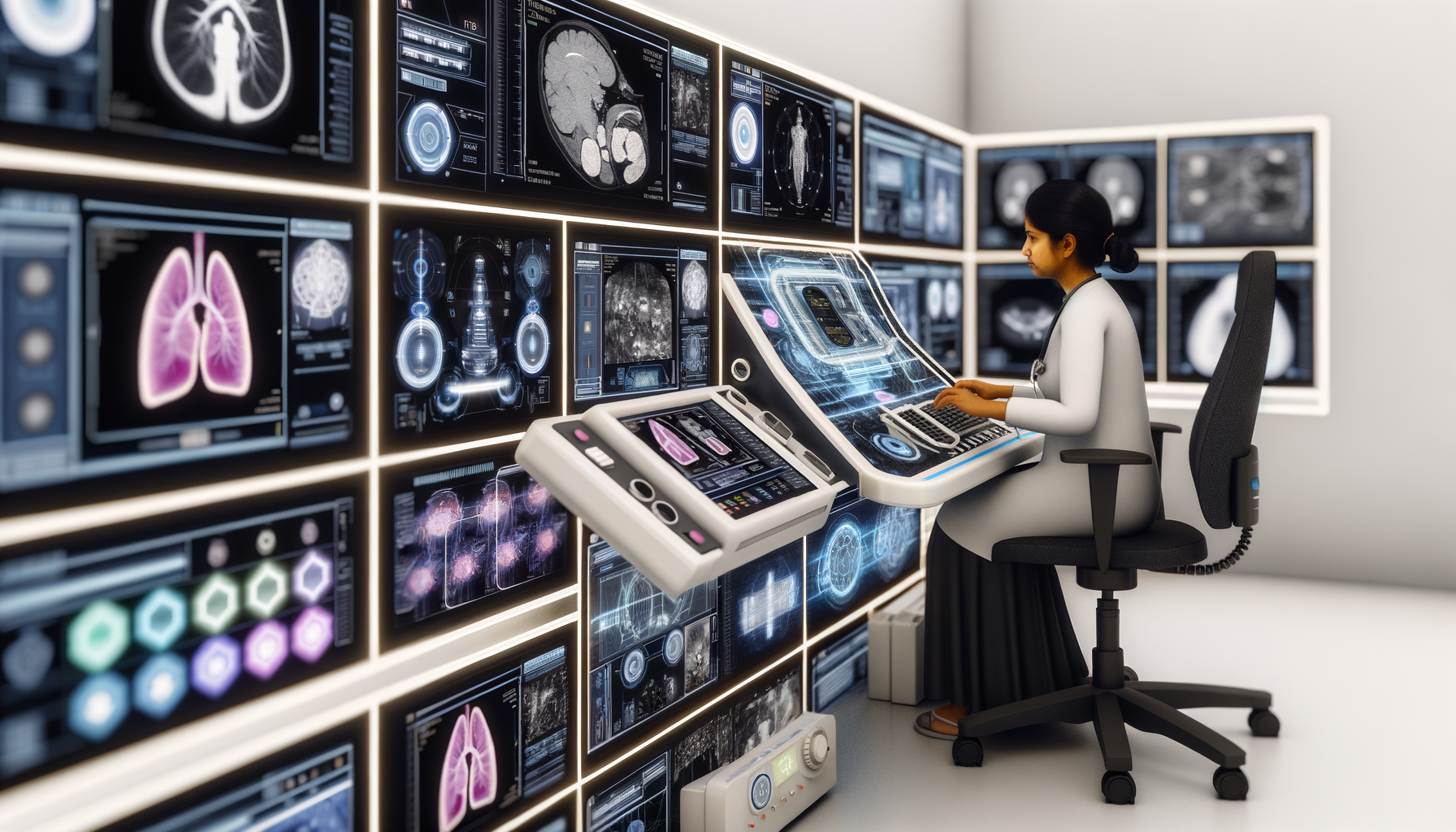
As technology evolves, the field of medical imaging is undergoing transformative changes. This article delves into how artificial intelligence and new inventions are revolutionizing radiology, enhancing diagnostic accuracy, and reshaping patient care.
The Impact of AI on Radiological Practices
The integration of artificial intelligence (AI) into radiology signifies a transformative era characterized by enhanced diagnostic precision and efficiency. Radiological practices, traditionally reliant on human expertise and manual interpretation of images, have begun to embrace sophisticated AI tools and models that are reshaping the landscape of medical imaging. With AI’s potential to analyze vast datasets and learn from experience, it offers unprecedented capabilities that are enhancing the role of radiologists while simultaneously reducing human errors.
AI advancements in radiology manifest through various innovative tools that streamline processes and improve outcomes. For instance, deep learning algorithms, particularly convolutional neural networks (CNNs), have been employed to automate the detection of abnormalities in radiographic images. These networks are trained on extensive datasets of labeled images, enabling them to recognize patterns and features that may be overlooked by the human eye. Studies have shown that AI can achieve diagnostic accuracy comparable to, and in some cases superior to, that of expert radiologists in areas such as mammography and lung cancer detection. This capability significantly reduces false-positive and false-negative rates, leading to better patient outcomes.
Another noteworthy advancement is the introduction of AI-based image segmentation techniques, which enhance the precision of tumor delineation in various modalities, including MRI and CT scans. Automated segmentation allows for more accurate volume measurement and treatment planning, critical factors in fields such as oncology where precise targeting is paramount. Such tools not only boost diagnostic capabilities but also facilitate personalized medicine by guiding treatment strategies based on accurately defined tumor margins.
The impact of AI on efficiency is also profound. Traditional image interpretation can be time-consuming, often leading to backlogs in radiology departments, especially in high-volume settings. AI tools enable radiologists to rapidly flag images requiring immediate attention while expediting the review process for routine cases. A study indicated that AI applications reduced image interpretation times by up to 50%, allowing radiologists to focus on more complex cases and consultative roles. This efficiency contributes to shorter turnaround times for patients, who benefit from timely diagnoses and treatment plans.
AI’s role in improving diagnostic precision and efficiency has garnered significant attention from the medical community. A growing number of healthcare institutions are exploring or have adopted AI tools within their radiology departments. The enthusiasm stems not only from enhanced clinical outcomes but also from the potential for AI to alleviate the burdens that radiologists face in an era of increasing patient loads and rising diagnostic complexities.
However, the integration of AI into radiological practice does not come without its challenges. Medical professionals express both optimism and skepticism regarding the technology’s implications, particularly concerning the ethical dimensions of AI in diagnostics. One major concern is the transparency and interpretability of AI algorithms. While AI systems may demonstrate high accuracy, the decision-making process behind their output can be opaque, posing a challenge for radiologists who must convey findings to patients and other healthcare providers. In cases where AI suggests a diagnosis, it’s vital that radiologists remain vigilant and interpret results critically, ensuring that they align with clinical context and patient history.
Another pressing ethical consideration is the potential for bias in AI algorithms. If the training datasets are not diverse and representative of the patient population, the AI may inherit and perpetuate existing healthcare disparities. For example, algorithms trained predominantly on images from one demographic may not perform as well on data from underrepresented groups, potentially leading to misdiagnoses and inadequate care. Thus, it’s essential for medical communities to advocate for the development of AI tools based on comprehensive datasets, ensuring equitable healthcare delivery across populations.
Furthermore, as AI begins to take on more roles in diagnostics, there is a palpable concern among radiologists regarding job security. The fear that AI may replace human expertise is a sentiment ripe with anxiety. However, many experts emphasize that AI should be seen as a complement to human skills rather than a substitute. Collaboration between AI and radiologists can elevate the quality of care—radiologists bring invaluable clinical insights and critical thinking skills that AI cannot replicate. The future of radiology, therefore, appears to lie in a hybrid model where human ingenuity and AI capabilities converge to deliver the best patient outcomes.
In conclusion, the integration of AI into radiological practices is reshaping the field with dramatic advances in diagnostic precision and efficiency. These new tools are reducing human error and accelerating image processing times, providing substantial benefits to both patients and healthcare providers. While the medical community receives these technologies with a mix of enthusiasm and caution, it is essential to navigate the ethical landscape as AI becomes increasingly embedded in daily practice. Through responsible development and implementation, AI has the potential to dramatically enhance the capabilities of radiologists, ultimately leading to a new era of medical imaging that is more accurate, efficient, and equitable than ever before.
Conclusions
Artificial intelligence has irreversibly transformed radiology, pushing boundaries in diagnostic capabilities and operational efficiency. As we continue to innovate, the role of AI in medical imaging will expand, promising enhanced patient outcomes and a new era in healthcare diagnostics.

